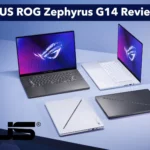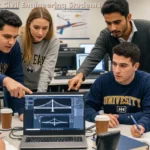Baltimore, MD – July 24, 2025 — Sinclair Broadcast Group is set to unveil a cutting-edge Android media tablet equipped with ATSC 3.0 technology during the APCO 2025 conference, taking place July 27–30 at the Baltimore Convention Center. This marks the first public demonstration of a mobile device integrating a NextGen TV receiver and antenna, signaling a bold new step in emergency alert delivery.
The broadcaster will showcase the ATSC 3.0-enabled tablet at booth #3065, alongside the AWARN Alliance and Digital Alert Systems, emphasizing the role of NextGen TV in public safety communications. The initiative aims to highlight how broadcast signals, known for their resilience during disasters, can reach users on-the-go — not just in front of their televisions.
“This demonstration is about proving the value of ATSC 3.0 for public safety beyond the living room,” said Patrick McFadden, Sinclair’s SVP of Global Public Policy and Communications.
Unlike Wi-Fi or cellular networks that can become unreliable during natural disasters, over-the-air broadcasting often remains operational. Sinclair points to past events such as Hurricane Helene, where major cellular outages occurred, but TV broadcast stations like Sinclair’s Asheville affiliate stayed live.
“We’re not saying wireless networks aren’t valuable,” McFadden explained, “but they’re not built with the same kind of redundancy. TV broadcasting offers a layer of resilience that mobile networks simply can’t match during emergencies.”
The showcased tablet—still in a precommercial phase—won’t be available for public purchase yet, but Sinclair confirms it has placed significant orders for the devices, a signal that the technology is advancing beyond early prototypes.
Also on display will be:
- The Mark Two ATSC 3.0-enabled smartphone
- Compact NextGen TV dongles for portable media devices
These demonstrations will allow over 5,000 APCO attendees to preview what real-time emergency alerts could look like on mobile platforms using ATSC 3.0.
While the tablet is geared toward public use, Sinclair acknowledges that the same technology can support first responders. Previous tests in North Carolina demonstrated how ATSC 3.0 can transmit digital emergency call data directly to field teams, showing dual-use potential.
Still, the focus at APCO 2025 remains firmly on consumer-facing applications. “We want to ensure communities are informed during emergencies,” McFadden noted. “And NextGen TV lets us do that — on any screen, anywhere.”
As media consumption shifts increasingly to mobile devices, the ability to deliver live TV and critical information over-the-air to tablets and smartphones could reshape the future of broadcasting.











